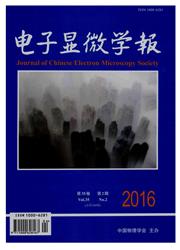

 中文摘要:
中文摘要:
本文应用荧光探针标记技术和透射电子显微镜研究微丝抑制剂(latrunculin b,LATB)处理青秆花粉管后,对其微丝骨架和超微结构的影响。结果表明:LATB剂量依赖性地抑制青秆花粉萌发和花粉管生长;应用荧光探针FITC-鬼笔环肽标记花粉管中的微丝,发现用正常培养基培养的花粉管中,柬状的F—actin以与花粉管长轴平行的方向排列,从花粉管基部一直延伸到花粉管亚顶端,而LATB处理导致微丝的解聚。通过透射电镜观察发现。LATB处理使花粉管顶端的透明区消失,顸端区域被一些空泡、脂粒等占据,线粒体膜破裂,高尔基体片层断裂成泡状结构以至解体。上述研究结果表明:微丝抑制剂LATB通过破坏花粉管微丝的组装和超微结构影响青秆花粉萌发及花粉管生长,因此微丝在青扦花粉萌发、花粉管极性生长模式的建立和维持过程中起重要作用。
 英文摘要:
英文摘要:
The effects of latrunculin B (LATB) on actin filaments and ultrastructure of Picea wilsonii pollen tube were investigated using fluorescent labeling and transmission electron microscope (TEM) observation. It was shown that LATB inhibited pollen germination and tube growth in a dose-dependent manner; fluorescent labeling revealed that a dense array of fine filaments, and a few thick bundles of filaments extended along the length of the control pollen tube beyond the collar into the apex. In the presence of LATB, the organization of filaments was obviously disturbed, resulting in a meshwork of short actin filaments. TEM observation showed that LATB induced sharp decline in the number of secretory vesicles and the increase in the number of vacuoles. In addition, the Golgi apparatus and mitochondria membranes disintegrated, indicating that the secretory system was interfered. In all, these results demonstrated that LATB, an inhibitor of actin polymerization, affected P. wilsonii pollen germination and tube growth through actin organization and ultrastructure, implying that actin played an important role in P. wilsonii pollen germination, organization and maintenance of polarized growth of pollen tube.
 同期刊论文项目
同期刊论文项目
 同项目期刊论文
同项目期刊论文
 期刊信息
期刊信息
